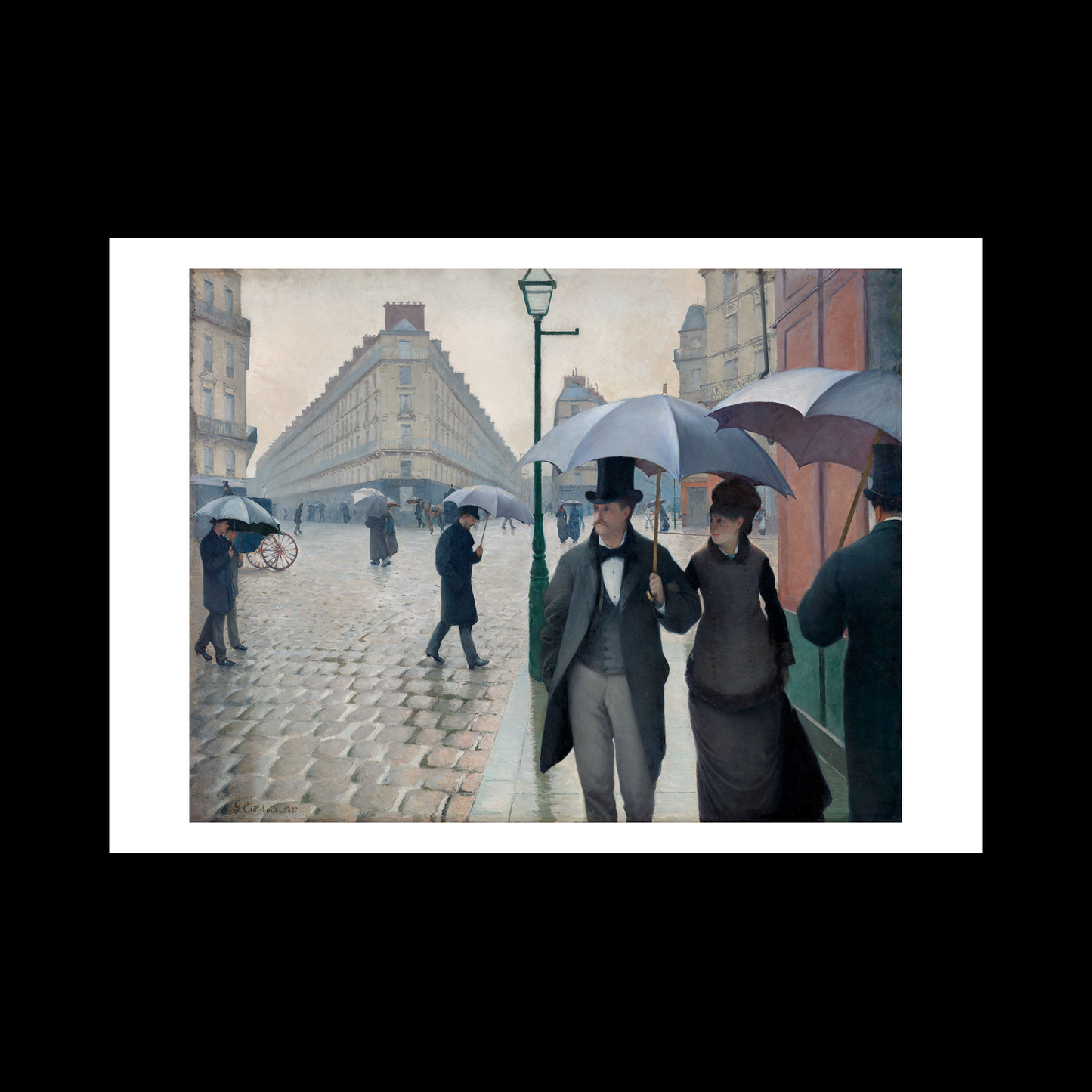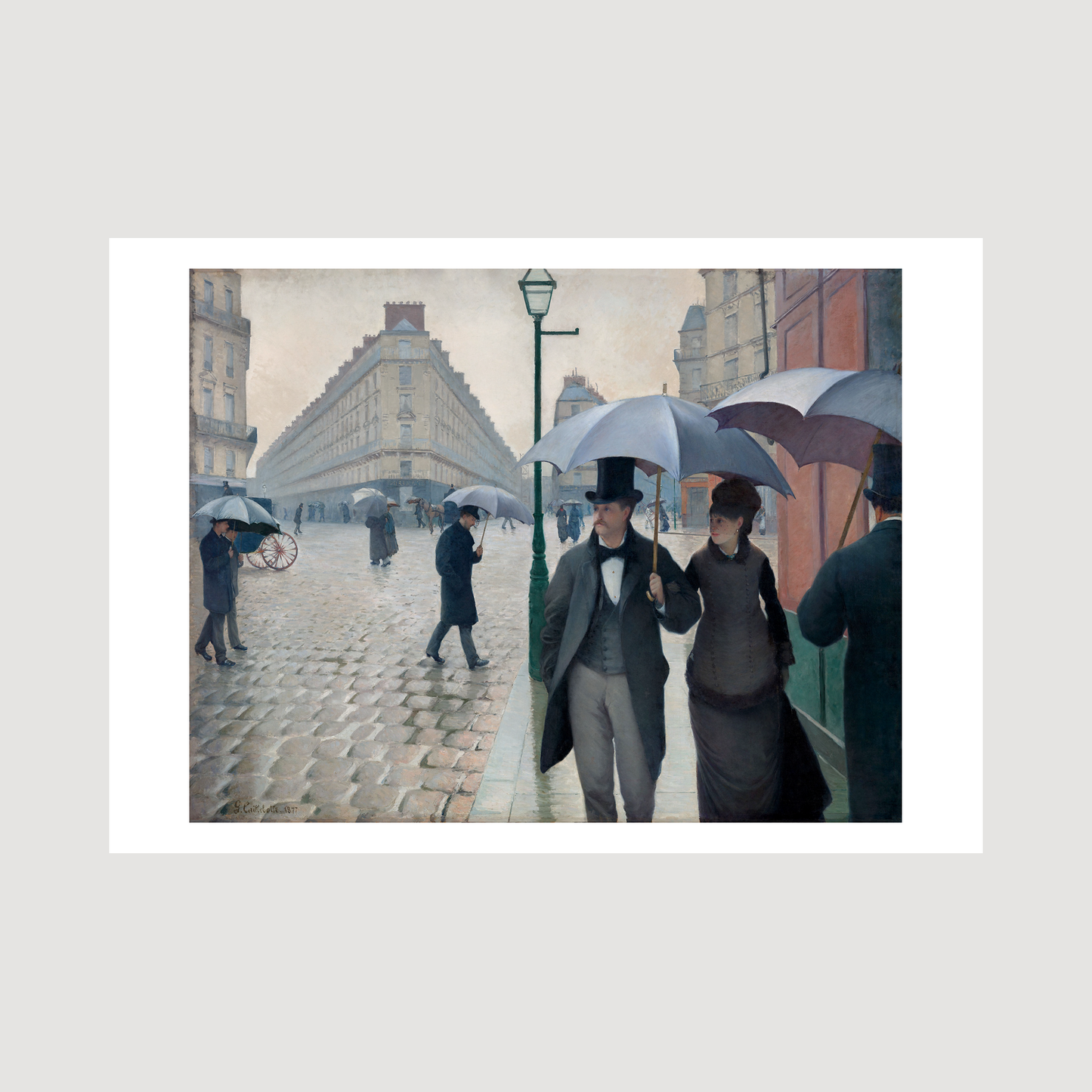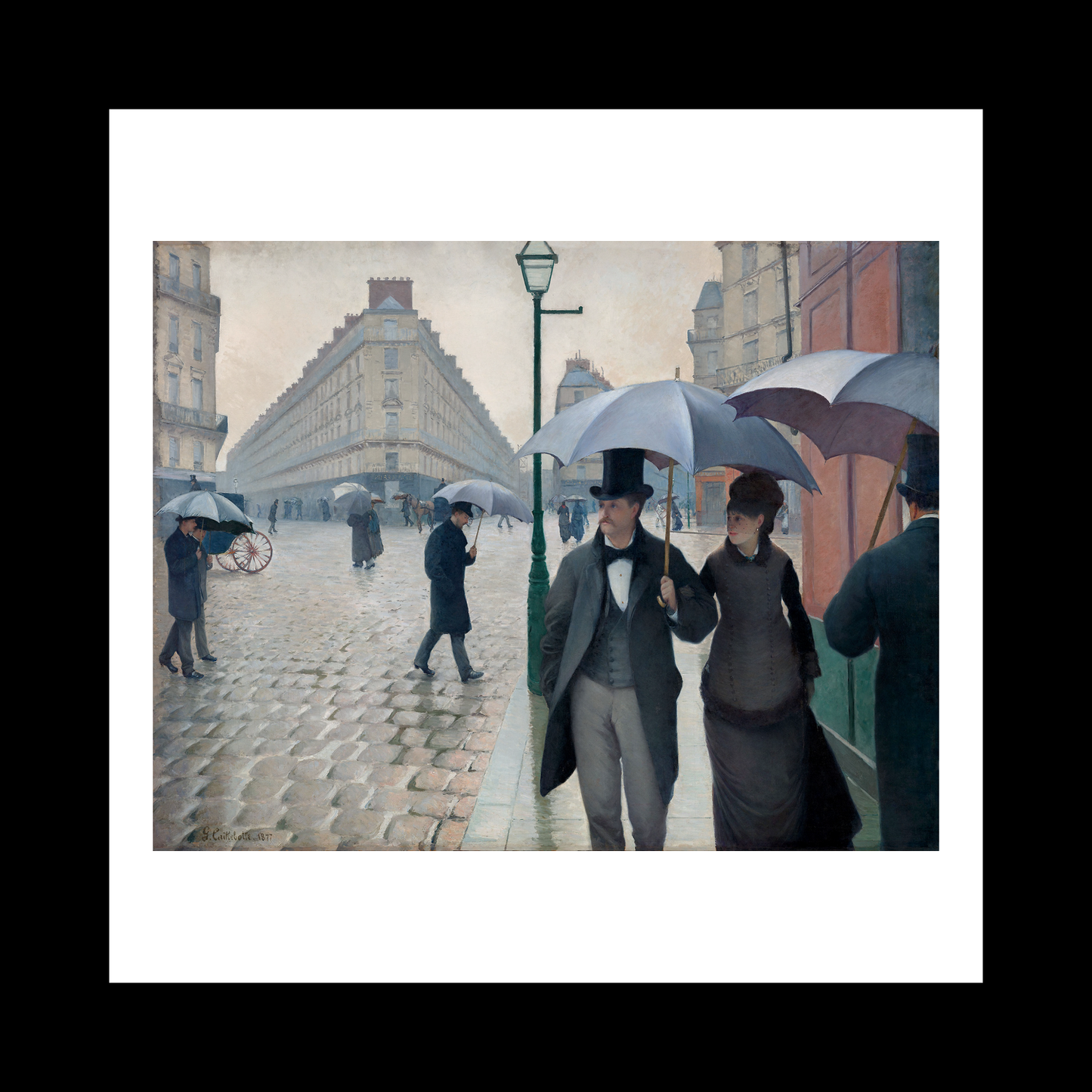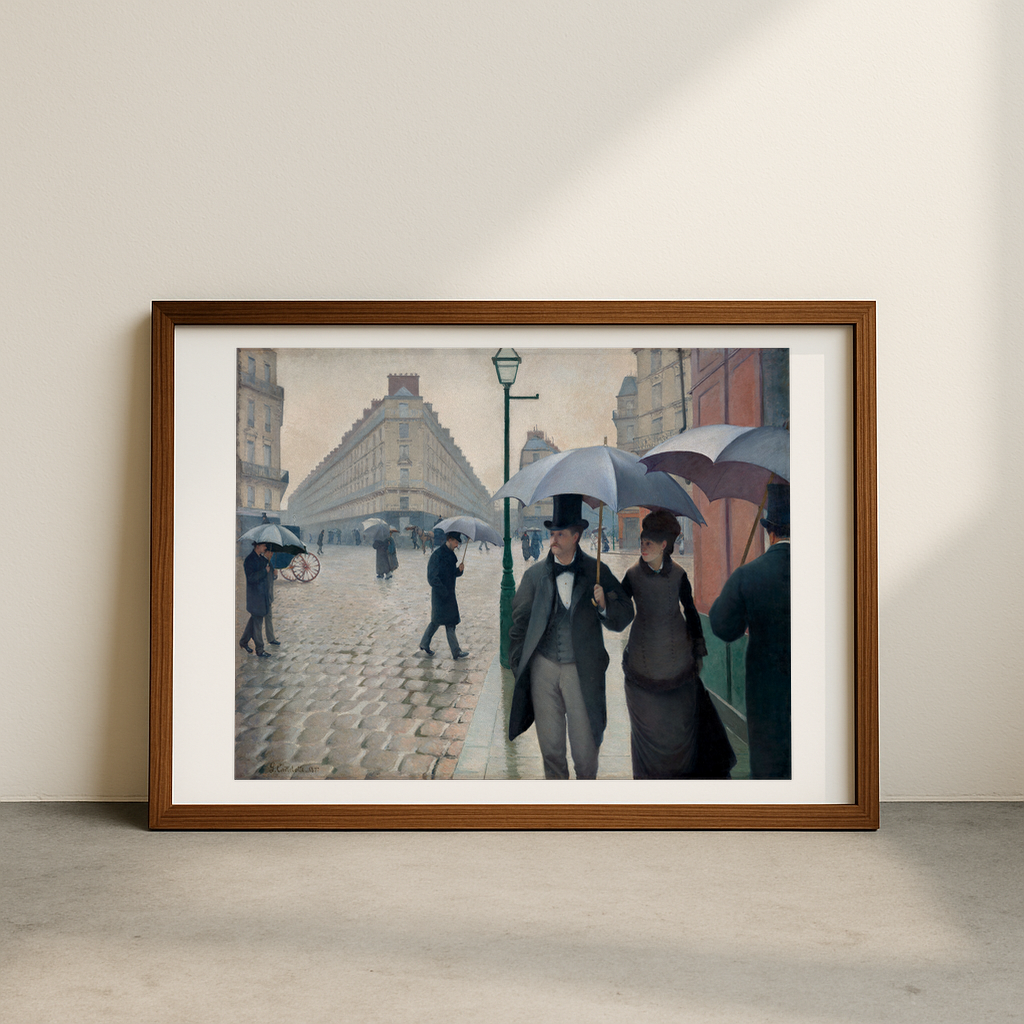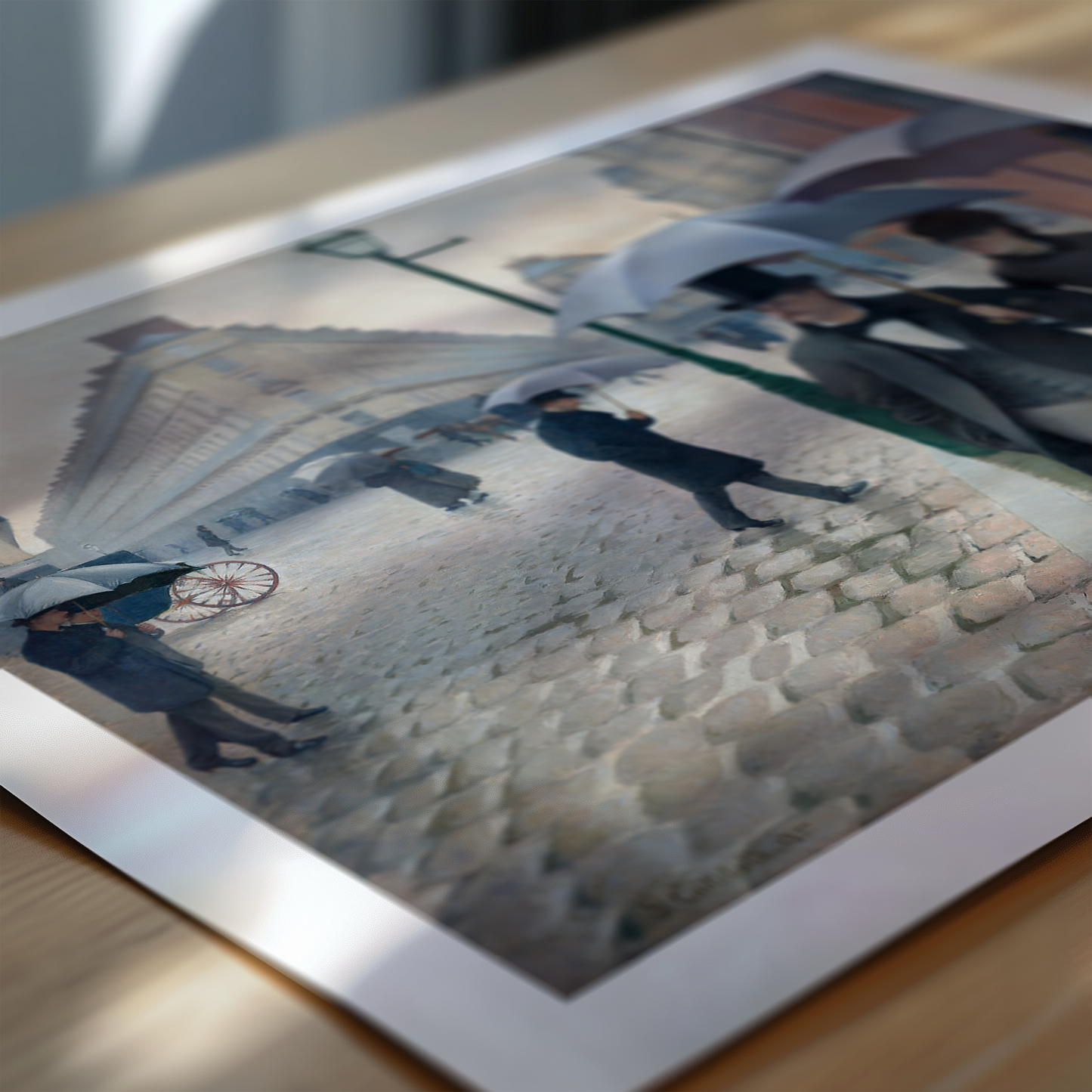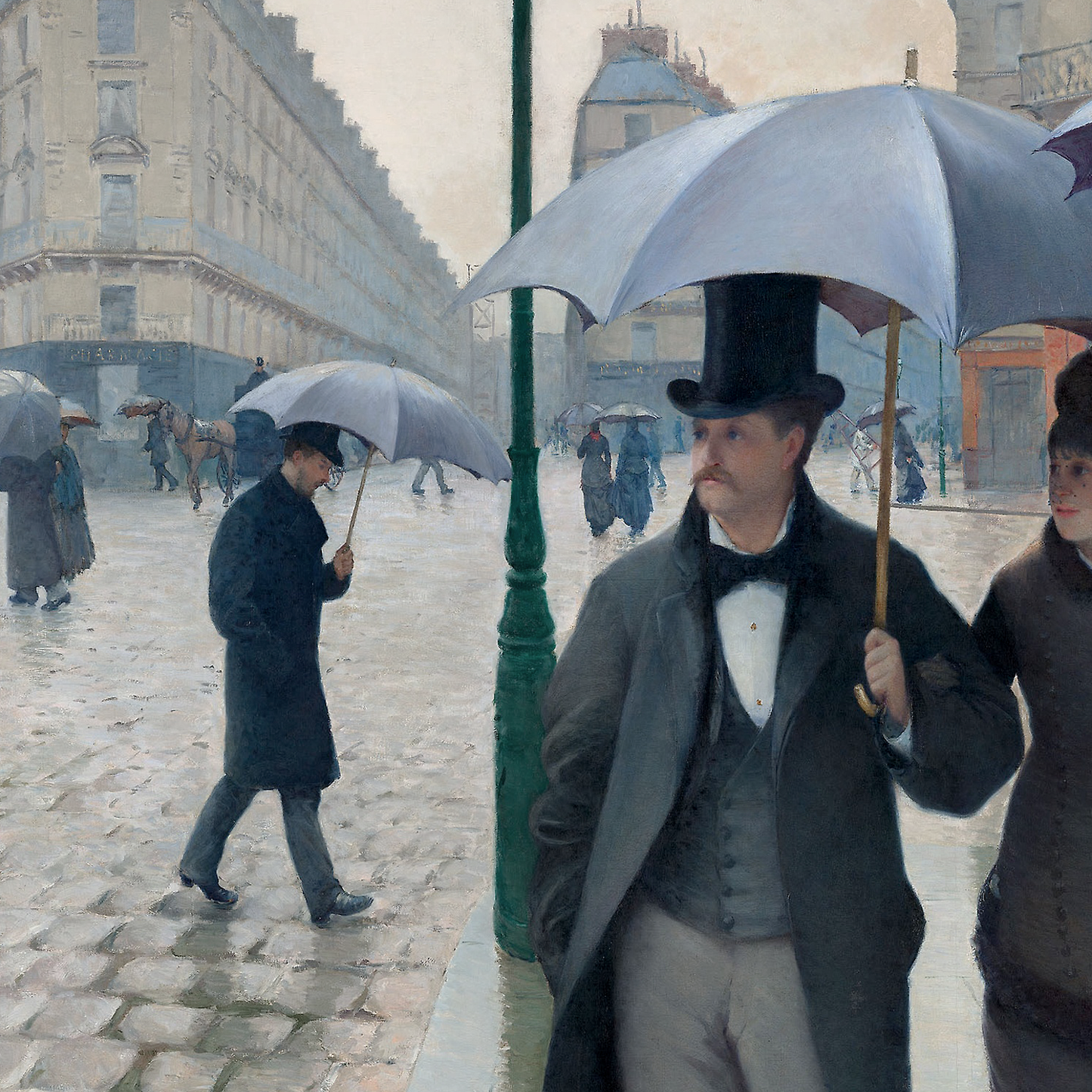1
/
of
6
Paris Street Rainy Day (1877)
Paris Street Rainy Day (1877)
Regular price
£12.45 GBP
Regular price
Sale price
£12.45 GBP
Taxes included.
Quantity
Couldn't load pickup availability
"Paris Street, Rainy Day" (1877) by Gustave Caillebotte captures the essence of modern Parisian life during the Haussmannisation period, when Baron Haussmann's radical urban renewal transformed Paris into a city of wide boulevards and uniform architecture. The large-scale oil painting showcases Caillebotte's masterful command of perspective and his ability to capture the atmospheric effects of a rainy day in the city.
The composition centres on well-dressed bourgeois Parisians navigating a wet intersection, their umbrellas creating a rhythm of shapes across the canvas. Caillebotte employs a sophisticated use of reflective surfaces, from the rain-slicked cobblestones to the gleaming buildings, demonstrating his technical prowess. The painting's photographic quality, unusual for its time, reflects the artist's interest in photography and modern urban life.
What makes this work particularly intriguing is Caillebotte's dual identity as both an artist and a wealthy patron of the Impressionists. Unlike his contemporaries who often painted rural scenes, Caillebotte chose to depict the modern city with almost scientific precision. The painting represents a unique bridge between academic realism and impressionism, showcasing the artist's distinctive style that earned him recognition among the avant-garde while maintaining traditional technical excellence. Through this work, Caillebotte documented the social and architectural transformation of Paris, capturing a pivotal moment in the city's history when tradition met modernity.
View full details
The composition centres on well-dressed bourgeois Parisians navigating a wet intersection, their umbrellas creating a rhythm of shapes across the canvas. Caillebotte employs a sophisticated use of reflective surfaces, from the rain-slicked cobblestones to the gleaming buildings, demonstrating his technical prowess. The painting's photographic quality, unusual for its time, reflects the artist's interest in photography and modern urban life.
What makes this work particularly intriguing is Caillebotte's dual identity as both an artist and a wealthy patron of the Impressionists. Unlike his contemporaries who often painted rural scenes, Caillebotte chose to depict the modern city with almost scientific precision. The painting represents a unique bridge between academic realism and impressionism, showcasing the artist's distinctive style that earned him recognition among the avant-garde while maintaining traditional technical excellence. Through this work, Caillebotte documented the social and architectural transformation of Paris, capturing a pivotal moment in the city's history when tradition met modernity.
